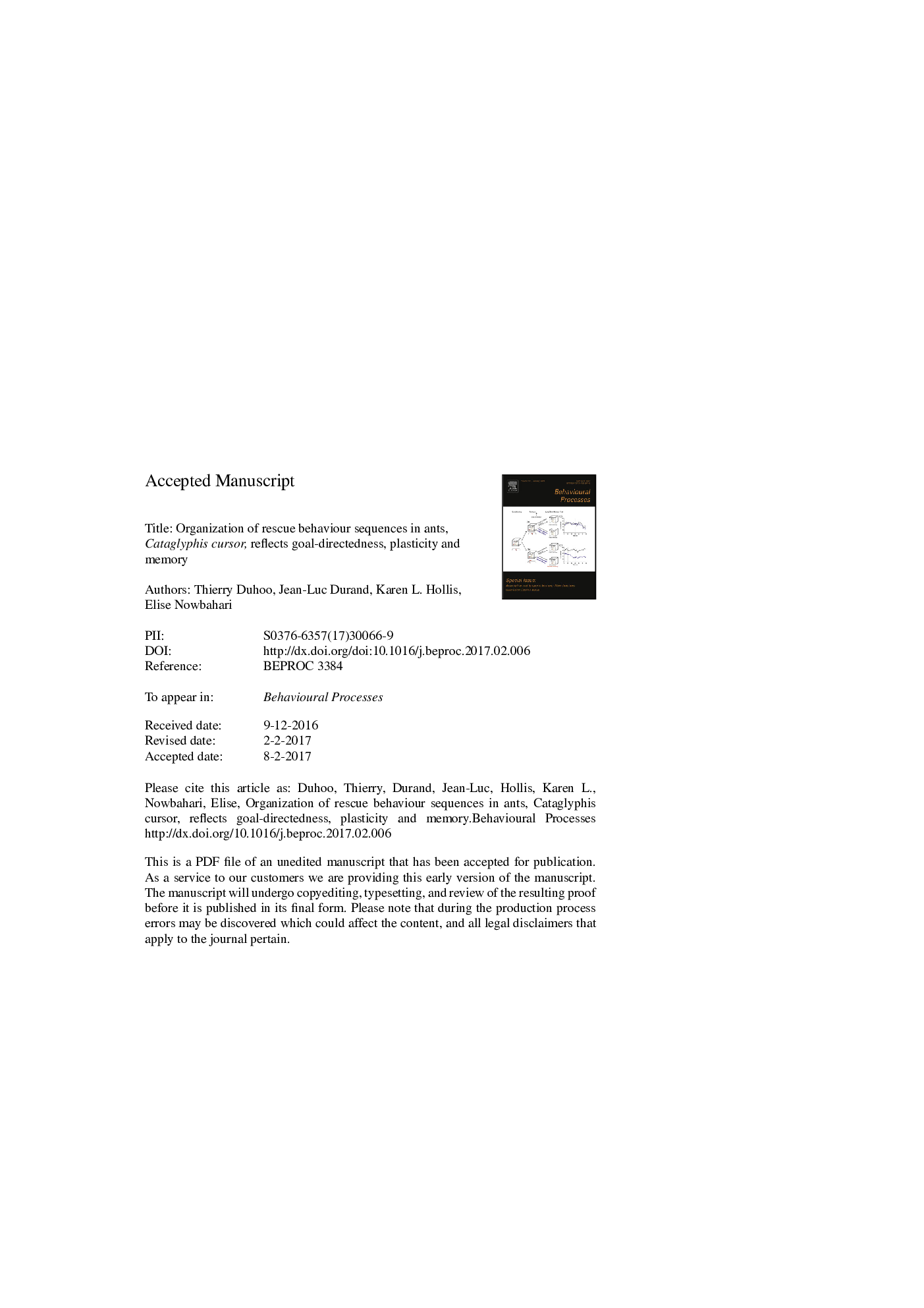| Article ID | Journal | Published Year | Pages | File Type |
|---|---|---|---|---|
| 5539668 | Behavioural Processes | 2017 | 29 Pages |
Abstract
The experimental study of rescue behaviour in ants, behaviour in which individuals help entrapped nestmates in distress, has revealed that rescuers respond to victims with very precisely targeted behaviour. In Cataglyphis cursor, several different components of rescue behaviour have been observed, demonstrating the complexity of this behaviour, including sand digging and sand transport to excavate the victim, followed by pulling on the victim's limbs as well as the object holding the victim in place, behaviour that serves to free the victim. Although previous work suggested that rescue was optimally organized, first to expose and then to extricate the victim under a variety of differing circumstances, experimental analysis of that organization has been lacking. Here, using experimental data, we characterize the pattern of individual rescue behaviour in C. cursor by analysing the probabilities of transitions from one behavioural component to another. The results show that the execution of each behavioural component is determined by the interplay of previous acts. In particular, we show not only that ants move sand away from the victim in an especially efficient sequence of behaviour that greatly minimizes energy expenditure, but also that ants appear to form some kind of memory of what they did in the past, a memory that directs their future behaviour.
Keywords
Related Topics
Life Sciences
Agricultural and Biological Sciences
Animal Science and Zoology
Authors
Thierry Duhoo, Jean-Luc Durand, Karen L. Hollis, Elise Nowbahari,
